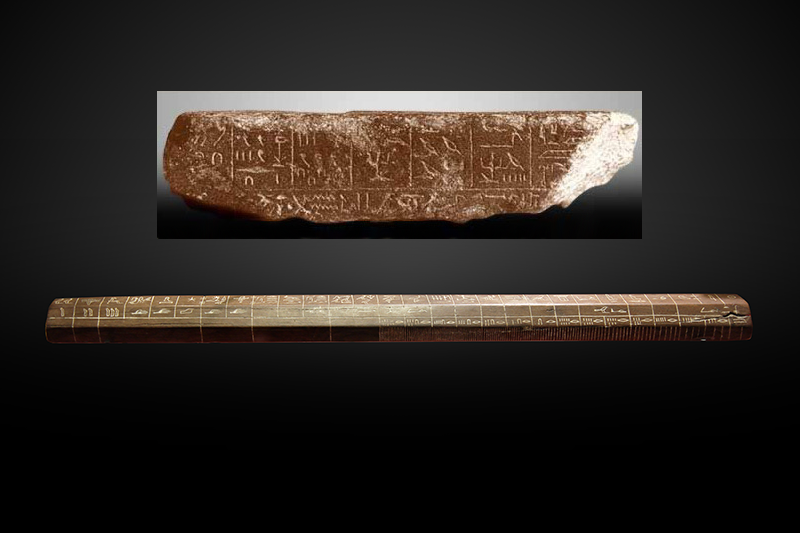
Walk like an Egyptian (or Roman): Redefining Le Grande K
Mike Edwards
Features Cameron Instruments Le Grande K Egyptian cubit measuring rods
Egyptian cubit measuring rods Last time (see part 1) we explored how humankind originally conceived of ‘measuring and recording’ the world around them. As the world’s population grew and human activity increased, people from different regions, countries and cultures expanded and eventually came in contact with one another.
By Tim Balazs
Experiencing and exchanging new methods — from agriculture, architecture, construction — to trying exotic new foods, spices, and sundries — was in fact a brave new world. Along with exchanging customs, art and cultural norms, came the true driving force of these interactions – trade — which created a crucial requirement, mutually agreed upon ‘standards’ of measure!
Up until this point of increased human interaction, units of measure were isolated to small regions or communities – with each developing their own standards for lengths, area, volume and mass.
Length was the most necessary measurement in everyday life, and it was based on elementary ‘human’ methods – an inch was a thumb, a foot was literally a human foot and a yard was related to the human pace. As mentioned in the previous article, a common unit of length — the cubit — was based on the length of the forearm of the king. The need to have a unit of measure that did not ‘die’ with each successive ruler was becoming paramount.
Age old conundrums of ‘yours is bigger than mine’ or ‘that seems wider at the other end’ — would cause confusion en masse. The creation of ‘standards’ became not only the most apparent solution, but absolutely crucial to ensure fair trading practices.
The beauty and eloquence of the evolution of human understanding — of what we now see as simple concepts – closely reflects the miracle of the evolution of humankind itself. We can see ourselves evolve as a species as we observe the evolution of ‘common’ understandings/ideas conceptualized and then shared among cultures in order to interact on a level playing field.
Where did a ‘standard’ come from and how do you capture it? In ancient Rome they tackled length in the form of ‘distance’. Romans defined a ‘pace’ as two full steps, bringing the walker back to the same foot (roughly a yard/meter). The early ‘mile’ originally referred to that distance as the ‘mille passus’ – a ‘thousand paces’ – an early tool to explain how far away the next village is.
The Egyptian solution for length on a smaller scale — suitable for construction — was to create an original rod or bar, of an exact – agreed to length (two cubits was standard – roughly a yard/meter) and then kept the rod in a central public place. Brilliant! So now every individual in the capital city can gauge the length of an object in question by comparing it to the ‘holy’ reference rod – stored in the central temple that is easily accessible to all.
The next step was to have it represented physically in the general population. I smell – replicas! Travelling to and returning to the local state capital’s temple repeatedly, presented somewhat of a logistical problem and the solution quickly became apparent. Simply fashion an exact replica, (as close as one could get) to the ‘holy’ bar and return with it to your home village so that now the entire state has adopted the new ‘standard’ measurement.
Next time we’ll examine the creation and acceptance of global standards as humankind took to the seas!
Tim Balazs is Inside Sales Coordinator at Cameron Instruments in Guelph, ON. This article is the first in a series of blogs on metrology, prompted by the recent redefinition of the kilogram to the Planck constant, also known as (aka) Le Grande K.
Print this page
